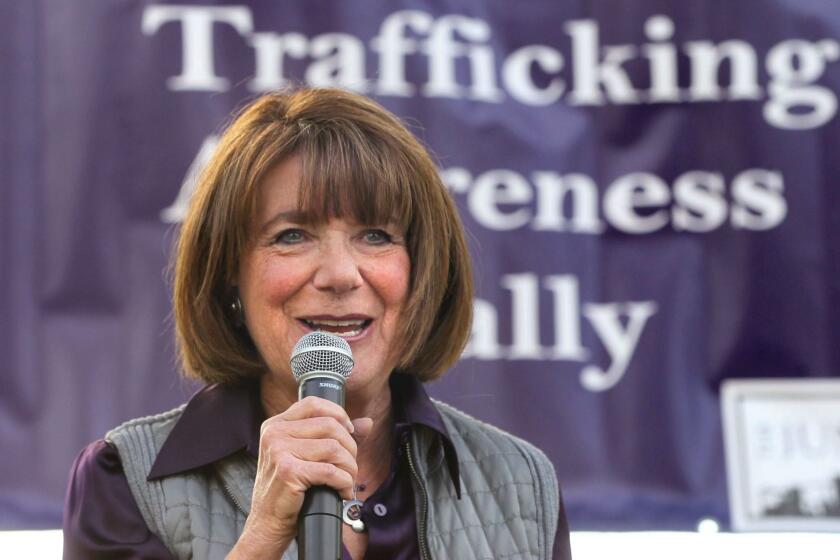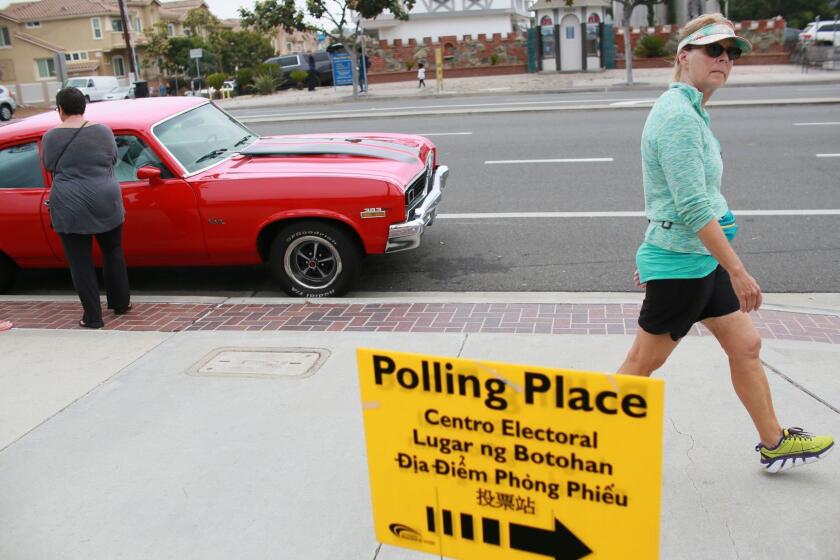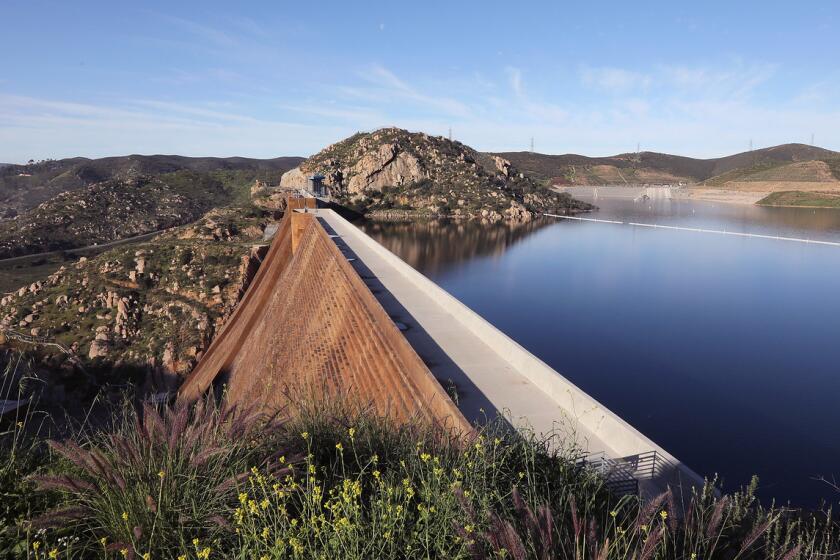Transportation sales tax hike to go on ballot
SANDAG to let voters decide on increase for road improvements, trolley expansion and open space
A regional panel of governments voted Friday to draft a ballot measure for a sales tax increase that would pay for road improvements, new trolley lines, and open space projects throughout the county.
The decision Friday morning is a significant step for San Diego Association of Governments, but there are still a series of procedural maneuvers before voters have the chance to weigh in during the November election on a half-cent sales tax increase that would last for 40 years and generate $18 billion.
Thirteen of the 21 voting SANDAG board members supported the measure, amount to 61 percent of the board’s population-based weighted vote. Both a popular and weighted majority were needed for the motion to pass.
Now, SANDAG’s staff is charged with drafting the ballot measure and creating the precise financing details for the various projects the tax will fund. The board is expected to first receive the draft ballot measure on May 13 and finalize it on May 27, before eventually approving it on June 24. From there the matter will go to the county Board of Supervisors to formally put the measure on the Nov. 8 ballot, where it will require a two-thirds majority for approval.
The expenditure plan — a document that explains how much money will be spent on each road, bike lane, bus route, open space project paid for by the tax — is the foundation of the ballot measure and is the most complicated step left in the process, SANDAG’s Executive Director Gary Gallegos said.
"This where the hard work starts," he said.
The document tells voters exactly what the 0.5 percent sales tax increase will pay for.
PREVIOUS
Faulconer to oppose SANDAG tax hike
Opposition grows to tax plan for roads, transit
In Opinion
Supervisor Ron Roberts, chairman of SANDAG’s board, said that the projects that will appear in the final version of the expenditure plan will be nearly if not entirely identical to priorities that were discussed in recent months.
If approved by voters, the tax is expected to raise $18 billion over 40 years. Of that, 24 percent, or approximately $4.321 billion, will be given to local cities and the county governments to spend as they see fit on transit projects, road improvements, beach sand restoration efforts, and open space initiatives. This money was allocated to cities in order to help the measure gain support from elected officials and to assure voters that the tax-hike would go to projects in their own communities.
But 69 percent of the $18 billion will remain in the hands of the governments association to partially pay for $204 billion in transit projects. The state and federal governments are also expected to contribute funds.
In 1987, San Diego County residents approved the 20-year TransNet program, a half-cent sales tax to fund a variety of transportation projects throughout San Diego County. In November 2004, voters approved an extension to 2048 that was expected to generate approximately $14 billion for highway, transit and local road projects.
Much of the disagreement over the new proposal has been about the balance between mass transit and road projects, and whether or not North County’s needs were being met. As the vote approached, advocates noted more of the funds would be spent on transit, but that a mix of approches was needed to address the overall region’s transportation needs.
"No one is going to get 100 percent of what you want. That’s not how you’re going to pass a two-thirds measure," San Diego City Councilman Todd Gloria said.
And despite the plan’s flaws, the money raised by a sales tax, if approved by voters, would make San Diego County more competitive in the fight to get federal and state financing, some board members said.
"To hear some folks to say that nothing is better than something is especially irresponsible," Chula Vista Mayor Casillas Salas said, referring to some of the criticism. "It’s turning your back on federal and state funding that would come down in this measure that would really help leverage our dollars to get those transit projects that are so necessary, to make those road improvements."
On Wednesday, San Diego Mayor Kevin Faulconer, a SANDAG board member, announced that he would not support the proposed tax. The La Mesa City Council also directed its representative to vote against it, and Escondido Mayor Sam Abed has announced that he didn’t support it either. All three, as they pledged, voted against the measure, as did county Supervisor Bill Horn, El Cajon Mayor Bill Wells, and Poway Mayor Steve Vaus.
"I can say that at a time when the City of San Diego, like all of us, is looking to stretch our tax dollars through measures like Proposition H, which is going to be on the ballot to rebuild San Diego, I don’t think raising taxes is the right approach,” Faulconer said. “A tax that will certainly impact working families the most."
Proposition H is city June ballot measure that would divert part of future increases in sales tax revenue and pension savings for infrastructure projects, but does not raise taxes. Faulconer had opposed an earlier plan for a massive bond that would have raised property taxes.
Most of the opposition to the proposal came from board members who represent cities in North County who argue that their constituents will be taxed to mostly pay for transit improvements when they’d prefer more road and highway improvements.
It is also met opposition from both the left and right sides of the political spectrum. A group of labor, environmental and transportation advocacy organizations say the tax doesn’t include enough funding for transit projects that will help reduce air pollution and make it easier for people to get to their jobs.
At the hearing, members of the Quality of Life Coaltion — the band of labor, environmental, and transit organizations — said that they’re well-funded and organized and will work to defeat the measure if it appears on the ballot.
The county Republican Party also opposed the measure but for different reasons. Chairman Tony Krvaric says it violates a long-standing policy against new taxes, while it spends too much on transit in a county where people prefer to commute by car.
“It is really something when Republicans, progressives, environmentalists,and labor unions are all united in opposition to this. It means SANDAG really got it wrong," said Gretchen Newsom of the International Brotherhood of Electrical Workers, one of the organizations in the coalition.
The requirement of a two-thirds majority voter approval is a tall order even when a tax measure has broad support. SANDAG’s recent polling showed that 67.8 percent of voters said they’ll vote in favor of the measure. However, support drops to 62.2 percent after voters hear arguments for and against the tax increase and the projects it will help fund.
Get Essential San Diego, weekday mornings
Get top headlines from the Union-Tribune in your inbox weekday mornings, including top news, local, sports, business, entertainment and opinion.
You may occasionally receive promotional content from the San Diego Union-Tribune.








